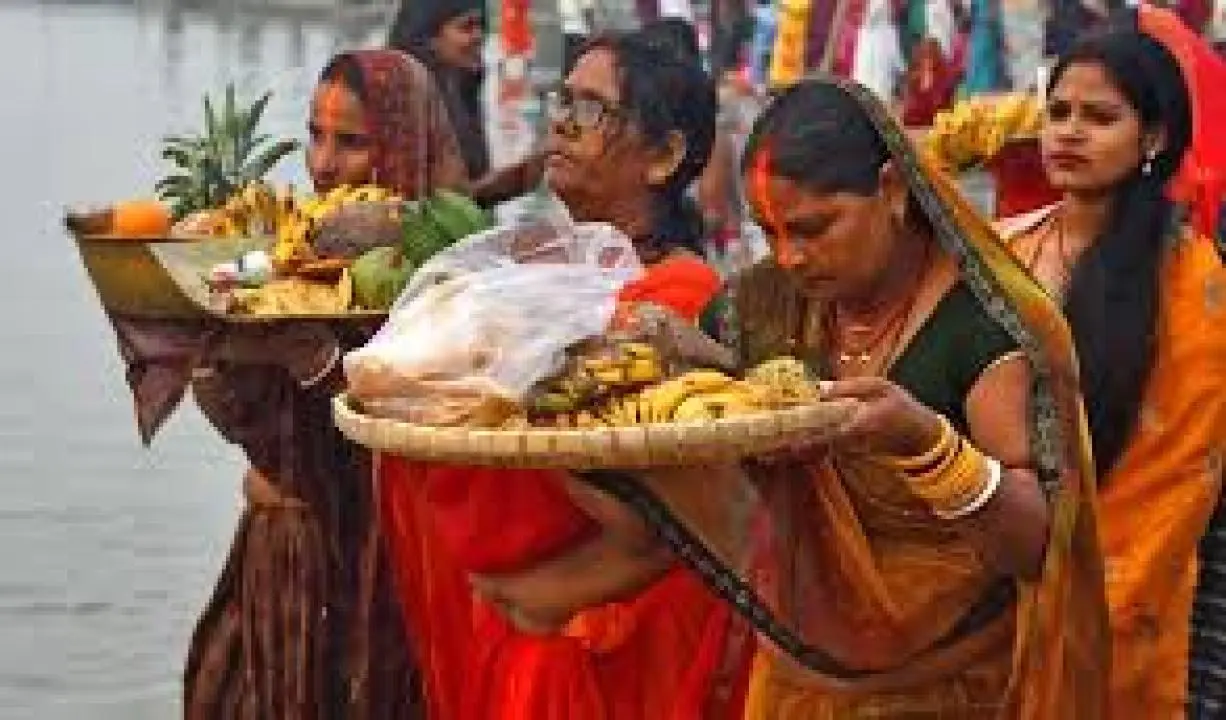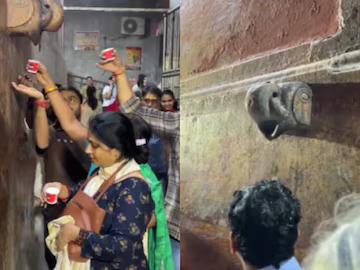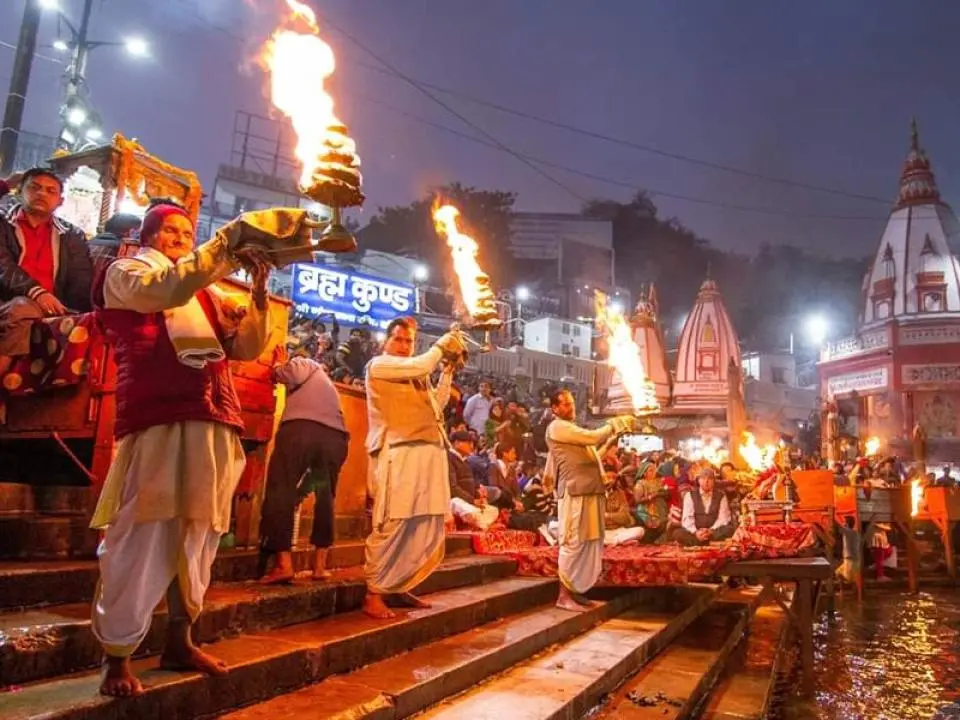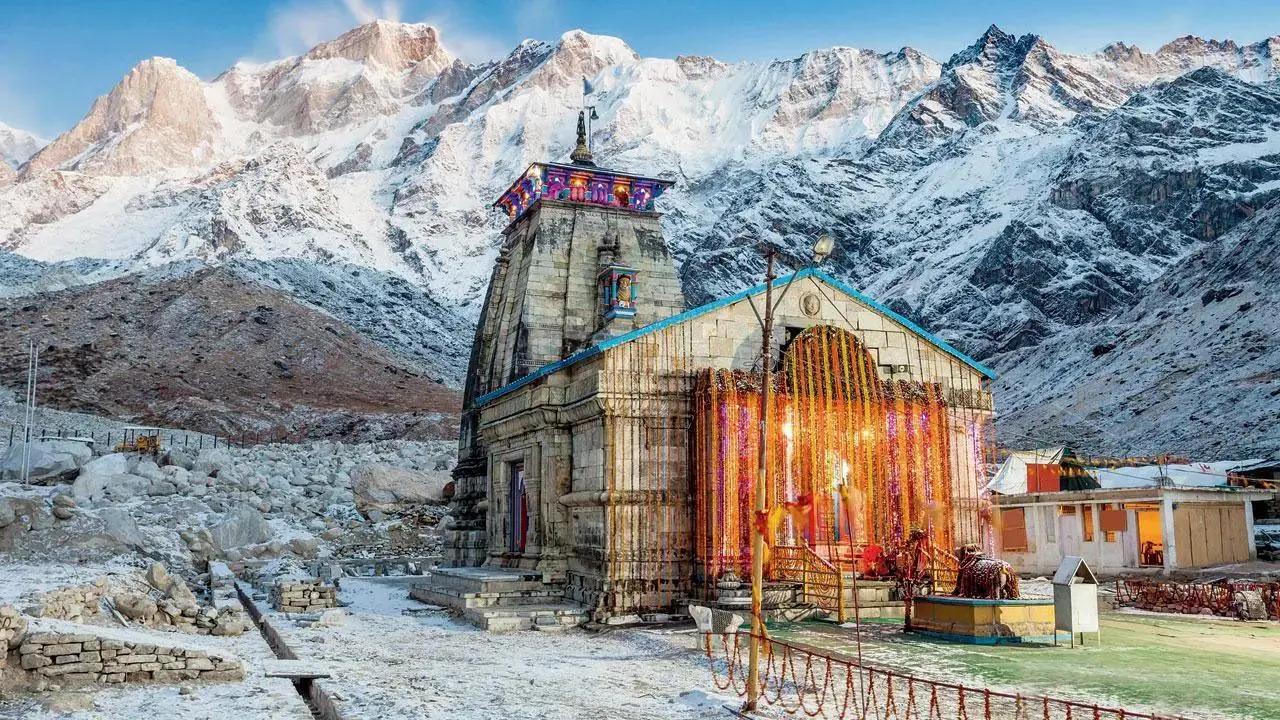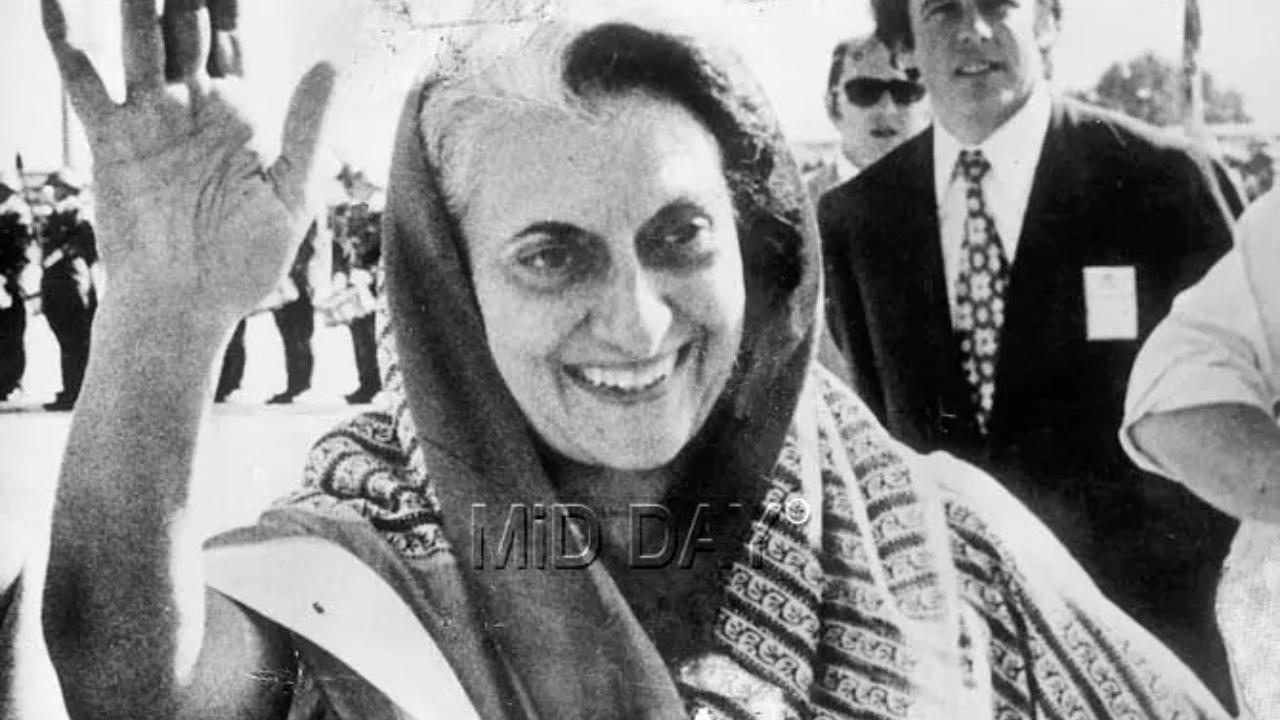Read Offbeat News
Christmas 2024: History, significance, and everything you need to know
Christmas, one of the most widely celebrated festivals globally, marks the birth of Jesus Christ. Celebrated on December 25, Christmas is a time for family gatherings, feasts, and spreading love and goodwill. While the festival has deep religious significance, it has also become a cultural celebration embraced by people from various backgrounds. In India, Christmas holds a unique place, intertwining Christian traditions with local customs and a spirit of unity and harmony. When is Christmas Celebrated? Christmas is celebrated on December 25 every year, the day Christians believe to be the birthdate of Jesus Christ. The holiday is preceded by the Advent season, which is a time of preparation and anticipation. The celebration extends over several days, starting with Christmas Eve on December 24, when many Christians attend midnight Mass or church services. On Christmas Day itself, families come together to share meals, exchange gifts, and participate in religious ceremonies. In India, the festive season begins early in December, with cities and towns across the country adorning their streets with Christmas lights, decorations, and Christmas trees. Churches are beautifully decorated, and the sound of Christmas carols fills the air. The culmination of this celebration is on December 25, when families come together to mark the birth of Christ. The Significance of Christmas in India In India, Christmas holds both religious and cultural significance, especially among the Christian community, but it also unites people from various walks of life. The diverse cultural fabric of the country makes the celebration of Christmas unique and inclusive. Religious Significance: For Christians in India, Christmas is a deeply spiritual occasion. It commemorates the birth of Jesus Christ in Bethlehem, symbolizing hope, peace, and love. Churches hold special masses on Christmas Eve and Christmas Day, where Christians come together to pray, sing hymns, and reflect on the teachings of Christ. The nativity scene, depicting the birth of Jesus, is a common decoration in churches and homes. Celebration of Peace and Goodwill: Christmas is a time to spread peace, goodwill, and love, which are central messages in the teachings of Jesus Christ. The festival encourages acts of charity, kindness, and compassion towards others, especially the less fortunate. Many people in India, regardless of their religion, take part in charitable activities during this time, donating food, clothes, and gifts to those in need. Cultural Fusion: While Christmas is a Christian festival, its celebration in India has evolved into a secular event, embraced by people of different faiths. The sight of Christmas trees, carolers, and Christmas decorations is common across cities, irrespective of the religious background of the people. The festival is marked by a spirit of unity, with many non-Christians also participating in Christmas celebrations, exchanging gifts, and enjoying festive meals. The multicultural nature of India adds to the richness of the celebration, with regional variations that make the holiday even more special. Family and Community Bonding: Christmas in India is a time for family reunions. People travel from far and wide to be with their loved ones during this special occasion. The festival promotes family bonding and community participation, as people come together to share meals, attend church services, and exchange gifts. In many parts of India, Christmas is also an opportunity for people to connect with their neighbours and friends, regardless of their religious beliefs. Festive Food and Traditions: Indian Christmas celebrations are incomplete without the delicious festive foods that vary across regions. From the traditional plum cake, made with dry fruits and nuts, to savoury dishes like roast turkey and biryani, Christmas meals are a culinary delight. In Goa and Kerala, the celebration includes a rich variety of seafood, while in states like Tamil Nadu and Andhra Pradesh, special sweets like kulkuls and neureos are made. The exchange of homemade treats, especially sweets, is an important part of the Christmas celebrations in Indian homes. Decorations and Festivities: In cities like Kolkata, Mumbai, and Delhi, elaborate Christmas decorations transform public spaces. Churches and homes are adorned with Christmas trees, stars, and lights. Christmas carols are sung in the streets, and special events like pageants, fairs, and concerts take place. The beautiful lighting displays, especially in Christian-majority regions like Goa, make the festive season vibrant and lively. In some areas, people also prepare cribs or nativity scenes, showcasing the birth of Jesus. Christmas in India is not just a celebration of Jesus Christ’s birth but also a festival of unity, peace, and love. It brings together people from different backgrounds and religions, fostering a spirit of inclusivity. Whether in the form of religious observance, charity, or cultural festivities, Christmas in India is a time to come together as a community, celebrate with joy, and spread goodwill across the nation.
26 December,2024 07:33 PM IST | Mumbai | mid-day online correspondentChristmas 2024: Heartfelt wishes and greetings to send to your loved ones
Christmas is a time for love, joy, and sharing special moments with the people who matter most. As the holiday season approaches in 2024, it's the perfect opportunity to send heartfelt wishes and greetings to your loved ones, letting them know just how much they mean to you. Whether you're celebrating in person or from afar, sending a thoughtful Christmas message can make the occasion even more memorable. Here are some beautiful Christmas wishes and greetings that will warm the hearts of your friends and family this holiday season. "Wishing you a Merry Christmas and a Happy New Year! May this festive season bring you joy, peace, and love." "May the magic of Christmas fill your home with happiness and your heart with love. Merry Christmas!" "Sending you warm Christmas wishes wrapped with love and joy. May this season bring you happiness and blessings." "Merry Christmas to the most wonderful family in the world! I'm so grateful for each one of you, and I look forward to celebrating many more Christmases together." "To my dear family, may the love and warmth of Christmas surround you now and throughout the New Year. Love you all!" "Christmas is a time to cherish those we hold dear, and I am lucky to have such an amazing family. Wishing you all a joyful and blessed Christmas." "Merry Christmas to my best friend! I feel so blessed to have you in my life, and I’m thankful for all the memories we’ve shared. Here’s to many more!" "Christmas is the perfect time to let you know how much your friendship means to me. Wishing you a joyful and festive season!" "To my wonderful friend, may your Christmas be filled with happiness, laughter, and all the things that bring you joy. Have a blessed holiday season!" "Wishing you a wonderful Christmas and a prosperous New Year! May your holiday season be filled with joy, and may you return to work refreshed and rejuvenated." "Merry Christmas! Wishing you a peaceful and joyful holiday season. Thank you for being such a great colleague and friend." "May this Christmas season bring you all the happiness and success you deserve. Looking forward to another great year working together!" "Merry Christmas! May your holiday season be filled with laughter, food, and absolutely no calorie counting!" "This Christmas, may your stress be low, your cookies be sweet, and your relatives be tolerable. Wishing you lots of festive fun!" "Wishing you a Christmas as bright as your smile and as fun as your holiday wardrobe! Have a merry and humorous Christmas!" "May the birth of Jesus bring peace and love to your heart and home. Merry Christmas and may God bless you abundantly." "This Christmas, may the light of Christ shine in your heart and bring you hope, joy, and everlasting love. Wishing you a blessed holiday season!" "As we celebrate the birth of our Savior, I pray that His love fills your life with endless blessings. Merry Christmas!" "Merry Christmas! Wishing you love, joy, and peace this holiday season." "May the Christmas season bring you warmth and joy. Have a wonderful holiday!" "Wishing you a season full of love, laughter, and blessings. Merry Christmas!" "This Christmas, I wish for you to find peace in your heart, joy in your soul, and laughter with those you love. May your holiday season be as amazing as you are!" "Merry Christmas to the person who makes every day brighter. May this festive season bring you happiness and everything you’ve been wishing for." "As we celebrate this special season, I want to thank you for being a constant source of love and support in my life. Wishing you a Christmas full of joy and unforgettable moments."
26 December,2024 07:32 PM IST | Mumbai | mid-day online correspondentOver 30 lakh devotees make pilgrimage to Badrinath and Kedarnath in 2024: Report
The Shri Badrinath-Kedarnath Temple Committee, in collaboration with the District Police Administration, has reported a record-breaking number of pilgrims visiting the sacred shrines of Badrinath and Kedarnath during the 2024 Yatra season. According to an official statement, a remarkable total of 30,87,417 pilgrims visited the two holy Dhams this year. At Badrinath Dham, the pilgrimage season culminated on 17 November, with 11,170 devotees visiting the shrine on the final day alone. The total number of visitors to the shrine since the gates opened on 12 May reached 14,35,341. Kedarnath Dham welcomed 16,52,076 pilgrims between 10 May and 3 November. This figure includes 1,26,393 devotees who chose to travel to the shrine via helicopter, highlighting the increasing popularity of aerial pilgrimages. In addition to the two main Dhams, 1,83,722 pilgrims visited Shri Hemkunt Sahib and Lokpal Tirtha Shri Laxman Mandir before their gates closed for the season on 10 October. The Shri Badrinath-Kedarnath Temple Committee acknowledged the vital support of the District Police Administration in ensuring the smooth management of this year’s Yatra. “These figures of the number of pilgrims for the year 2024 for Shri Badrinath-Kedarnath have been released by the Shri Badrinath-Kedarnath Temple Committee with the cooperation of the District Police Administration,” the official statement read. On Sunday, large numbers of devotees gathered at Shri Badrinath Dham as the temple prepared to close its gates for the winter season at precisely 9:07 PM. Ahead of the closure, rituals were performed where Lord Badri Vishal was adorned with flowers, and the idols were prepared for the winter arrangements. Mata Laxmi was seated in the sanctum sanctorum after 8:00 PM, and the idols of Uddhav Ji and Kuber Ji were moved to Bamni. The temple, which had been decorated with 15 quintals of marigold flowers, remained open throughout the day for the final round of worship. Kedarnath Dham had already closed earlier on the occasion of Bhai Dooj with elaborate Vedic rituals, chants of "Om Namah Shivay" and "Jai Baba Kedar," and performances by the Indian Army band. Gangotri Dham’s gates were closed on 2 November, while Madmaheshwar Ji’s doors are scheduled to close on 20 November. The successful management of the Yatra reflects the joint efforts of the temple authorities and local administration, as per ANI. (With inputs from ANI)
18 November,2024 10:03 AM IST | DehradunGurunanak Jayanti brings light and devotion to Mumbai's gurudwaras
As Mumbai prepares to celebrate the 555th birth anniversary of Guru Nanak Dev Ji, the founder of Sikhism, on November 15, community leaders from three prominent Gurudwaras share insights into how these celebrations continue to embody Guru Nanak Dev ji’s timeless message on equality, and unity. “Let this be a time of unity, of sharing, remembering what Guru Nanak stood for. Spread love, foster unity, and always remember God,” says Gurmukh Singh, president of Gurudwara Sri Dasmesh Darbar at Thane. Langar: The selfless community meal Guru Nanak’s emphasis on langar arose as a reaction to the social injustices of his time, particularly the caste system, which dictated who could eat with whom. By establishing langar, he demonstrated that all people are equal before God. Today, gurudwaras worldwide offer langar daily, with the food prepared and served by volunteers. A defining aspect of Sikhism is the practice of langar, or the community kitchen. Langar was introduced by Guru Nanak as a means of promoting equality, where all, regardless of social status, religion, or gender, could share a meal together as equals. The concept of langar symbolises the idea that no one should go hungry and reinforces the principle of selfless service to others, a pillar of Sikh belief.At Gurdwara Sri Guru Nanak Darbar in Borivali, President Narendra Singh Mokha shared how langar on this day feeds thousands. “In a single day, nearly 5,000-10,000 people share langar. It’s humbling to see people from all walks of life sit and eat together.” Langar at this Gurudwara, like in many others, extends beyond feeding the body; it’s about nourishing the soul with a sense of shared community.Similarly, Dadar Gurudwara’s Manmohan Singh Rathi elaborates on the sheer scale of the langar during Guru Nanak Jayanti. “This year, we expect over 30,000 people to join us. The act of sitting together, rich or poor, Sikh or non-Sikh, reminds us that we’re all equal in the eyes of God,” he says. Rathi notes, “The purpose of Langar is to ensure that no one goes hungry and that all feel welcome.”Gurmukh Singh highlights the scale of their preparations, with volunteers gearing up to serve nearly 7,000 to 8,000 people. The Gurudwara will prepare an immense amount of food, including 400 kg of chapati, 130-140 kg of rice, and 200 kg of kheer. He explains, “Langar was a social revolution. It allowed people to sit together for food, breaking barriers.” Prabhat Pheri and Nagar Kirtan: Community on the move One of the beautiful traditions while celebrating Guru Nanak Jayanti is the Prabhat Pheri – early morning processions where devotees sing hymns and carry the divine message into the streets. Leading up to the festival, Prabhat Pheris invites local communities to join in these early dawn gatherings, walking and singing together, reminding people of the core values of equality and devotion.Nagar Kirtan is another integral part of these celebrations, where the Guru Granth Sahib, the sacred scripture of Sikhism, is carried through the streets in a beautifully adorned palanquin. At the head of the procession are the Panj Pyare or “Five Beloved Ones,” representatives of courage and selflessness. The kirtans, or hymn recitals, fill the air, transforming ordinary streets into paths of reverence and unity.Gurmukh Singh, president of Sri Dasmesh Darbar in Thane, described their Prabhat Pheris as a joyful experience that unites the community. “For three days, we walk together, sing together, reminding ourselves and others of Guru Nanak’s teachings.”Rejecting distinctions based on religion, caste, or gender, Guru Nanak promoted a universal message of love, equality, and humility, which became the bedrock of Sikh philosophy. Guru Nanak Dev Ji was born in 1469 in Talwandi, a village now known as Nankana Sahib in Pakistan. His teachings were centered on three core principles: Naam Japna (remembering God’s name), Kirat Karni (earning an honest living), and Vand Chakna (sharing with others, especially those in need). These teachings, which guide the faith, are celebrated on his birth anniversary through acts of devotion, compassion, and service. Mokha advises embracing Guru Nanak’s teachings in daily life, “Live happily, work hard, and help those in need. This is the true Sikh path of life.” Addressing the Khalistan agenda concerning Sikhs In recent times, certain issues like Khalistan have come to be associated with Sikhism, often casting a political shadow over its peaceful teachings. However, the community leaders were unanimous in their stance. “The true Sikhism of Guru Nanak has no political agenda,” says Gurmukh Singh. “Our focus is on service, love, and universal brotherhood.” Mokha echoes this sentiment, stating, “Sikhism’s goal is not division; it is inclusion and harmony.”Rathi from Dadar Gurudwara added, “This time is sacred, and I would urge everyone to look beyond political issues and focus on the peace and unity that Guru Nanak preached.”
16 November,2024 02:07 PM IST | Mumbai | Anisha ShrivastavaVaranasi: Large crowds gather at Dashashwamedh Ghat for 'Ganga Mahotsav 2024'
A large number of people gathered at Dashashwamedh Ghat in Varanasi to witness the Ganga Aarti as part of the ongoing five-day Ganga Mahotsav 2024. This vibrant annual festival, held from November 11 to November 15, celebrates the sacred River Ganges and its spiritual significance. The festival has become a major cultural event, attracting visitors from all over the world to experience the rich traditions of Varanasi, one of the oldest living cities in the world. The evening saw a remarkable performance by Kathak dancer Yasmin Singh and her team. Their dance piece was based on the 'Ardhanareshwar' form of Lord Shiva, symbolising the unity of Shiva and his consort Parvati. The performance highlighted the balance of masculine and feminine energies, with Singh sharing her excitement at performing in Varanasi again. "I first performed here in 2012 during 'Meri Ganga Mausam' and now, in 2024, I am thrilled to present my work once more. The theme focused on Shiva’s half form, which we presented through a bhajan, 'Om Hari Om,'" she told ANI. Singh and her team were visibly delighted to perform in front of such an enthusiastic audience. The celebration of the Ganga Aarti, accompanied by chants and hymns, filled the air with a deep sense of spirituality, adding to the overall joy of the event. The audience’s enthusiasm reflected the significance of the festival, and the performers expressed their gratitude for being part of such a grand occasion. As noted on the official Kashi portal, the Ganga Mahotsav is a grand cultural celebration that showcases classical music and dance, art exhibitions, boat races, and the iconic Ganga Aarti, a special worship ceremony. The Aarti, performed by priests with lamps and candles floating on the Ganges, creates a breathtaking visual spectacle that attracts hundreds of devotees and visitors every year. The event continues to honour the cultural heritage and spiritual significance of the sacred river, leaving an indelible mark on all those who attend. (With inputs from ANI)
13 November,2024 09:59 AM IST | VaranasiDevotees celebrate Chhath Puja with holy dip in Ganga at Patliputra Ghat
Devotees commenced the vibrant celebrations of Chhath Puja with traditional rituals and a sacred dip in the Ganga at Patliputra Ghat in Patna on the first day of the festival, known as 'Nahaye Khaye.' This grand festival, which holds immense significance in the folk faith, began on Tuesday and will continue for four days. Thousands of devotees flocked to Patliputra Ghat, located at Digha in Patna, to partake in the auspicious occasion. As part of the rituals, they took a holy bath in the river and offered 'aradh' (water offerings) to the Sun god, Surya Dev. The atmosphere was filled with devotion and reverence as families gathered to celebrate together. Speaking to ANI, several devotees expressed their excitement about the festival. One devotee stated, "We have arrived here at the ghat to take a bath in the holy water of River Ganga. After taking the bath, we will collect the sacred 'Ganga Jal' and prepare prasad. Today, we prepare arwa rice, chana dal, pumpkin vegetable, and pakodas as offerings." Another devotee, who travelled all the way from Jamshedpur in Jharkhand, shared, "We have come to Patna specifically to perform Chhath Puja. We eagerly wait for this day and have been observing the festival for the last three years. My entire family participates in the rituals, not seeking specific wishes but only blessings from Chhatti Maiya." Meanwhile, celebrations for the four-day Chhath Puja were also witnessed at the Kalindi Kunj Chhath Ghat in Delhi on Tuesday morning. The festival holds a special place in the hearts of Biharis and Jharkhandis, as it unites families in paying homage to the Sun God and Chhathi Maiya. Chhath Puja is particularly noted for its high participation of women and is marked by fanfare. It serves as an occasion for many to take a break from daily household chores and refresh themselves. The festival is primarily celebrated in Bihar, Jharkhand, Uttar Pradesh, and parts of Nepal, as well as by the diaspora from these regions. Spanning four days, Chhath Puja is one of the most significant and rigorous festivals in the Indian cultural calendar, involving strict rituals and fasting. It expresses gratitude to the Sun God for sustaining life on Earth. This year, Chhath Puja will be celebrated from November 5 to 8.
05 November,2024 11:20 AM IST | PatnaDevotees drink AC water believing it’s ‘Charan Amrit’ at Banke Bihari temple
In a surprising incident at the Banke Bihari Temple in Vrindavan, Uttar Pradesh, devotees were seen drinking water dripping from an elephant-shaped spout, believing it to be ‘Charan Amrit’ or holy water from the feet of Lord Krishna. A video capturing this scene has since gone viral, sparking discussions on social media about faith and scientific thinking. The footage shows numerous devotees cupping their hands or using small cups to collect and drink the water, which flowed from an elephant sculpture integrated into the temple’s architecture. However, this wasn’t holy water—it was, in fact, water from the temple’s air conditioning system. According to reports, the water was simply AC discharge that drained from tubes designed to resemble an elephant's mouth. Despite a temple visitor filming the scene and clarifying that the water was not ‘Charan Amrit’ but AC discharge, many devotees continued drinking it and even splashing it on their heads. The person filming was heard warning others, saying, “This is AC water, not water from Lord Krishna’s feet. The priests of this temple have confirmed this.” Still, several devotees smiled and continued, apparently unmoved by the clarification. It’s alarming how misinformation spreads when there’s a lack of basic education. People are consuming AC water, believing it to be holy “Charanamrit.” Education isn’t just about facts; it’s about critical thinking and awareness. pic.twitter.com/R6fHMeHqQW — Sayantani (@SayantaniINC) November 3, 2024 The video, which has been widely shared on social media, attracted a range of reactions. Many viewers commented on the incident, with some expressing disbelief at the actions of the devotees and others criticising the lack of critical thinking. One user on social media remarked, “A mind without scientific temper is the birthplace of myths and superstitions.” Another commented, “Why doesn’t anyone stop and think about what they’re doing? This shows a herd mentality.” The Liver Doc, a popular social media personality, also weighed in, warning followers not to drink AC water due to potential health risks, as such systems can harbour bacteria and fungi. This warning was echoed by others concerned about the health risks associated with drinking discharge from air conditioning systems. The incident also reminded many of a similar event in Mumbai in 2012. In that case, water was seen dripping from the feet of a statue of Jesus Christ, leading devotees to believe it was a miraculous event. However, an investigation by rationalist Sanal Edamaruku revealed that the water was coming from a clogged drainage pipe, not from any divine source. This latest event has once again highlighted the tension between faith and scientific understanding. Some social media users called for more awareness and critical thinking, while others defended the devotees, arguing that such expressions of faith are a personal matter. The viral video, with millions of views, has stirred a wider debate on social media, reminding us of the importance of balancing religious beliefs with practical awareness.
04 November,2024 08:47 PM IST | Vrindavan | Anisha ShrivastavaGanga Utsav 2024 in Haridwar: Chandi Ghat gears up to celebrate the River Ganga
As the spiritual city of Haridwar readies itself for the eighth edition of Ganga Utsav, preparations are underway at Chandi Ghat for a grand celebration on Monday. According to ANI, the event is organised by the National Mission for Clean Ganga (NMCG) with the aim of promoting the conservation of the River Ganga, highlighting its cultural and spiritual importance, and raising public awareness about cleanliness. This year's Ganga Utsav, taking place on November 4, will see a vibrant inauguration led by Union Minister for Jal Shakti, C.R. Patil. The festival promises to celebrate the Ganga with great pomp, with several distinguished guests expected at the opening ceremony. A standout feature of this year's celebration, as per ANI, is the Women's River Rafting Campaign. Organised in collaboration with the Border Security Force (BSF), the campaign involves a team of 20 women who will journey from Devprayag to Ganga Sagar over a span of 50 days. This group aims to raise awareness about the Ganga's significance while promoting its conservation along the way. According to Rajeev Kumar Mital, Director General of the NMCG, this initiative marks a unique effort in which a women's team will actively engage with communities along the Ganga, spreading the message of the river's purity and continuous flow. Mital also emphasised other aspects of the Ganga Utsav, which include efforts to revive the native fish species, 'Mahseer,' in the river. According to ANI, the population of Mahseer had dwindled over the years, but with improvements in water quality, there are now plans to reintroduce them into the Ganga as part of the event. Mital noted, “This is an important step as we see the river's health improving. We will also be launching products and knowledge portals related to the River Ganga.” In addition to these initiatives, the event will feature various cultural performances, including a special appearance by actor Ashutosh Rana, who will perform as part of the celebrations. As per ANI, the festival will also showcase a spectacular Ganga Aarti and a sound and light show narrating the story of Haridwar. Cultural programmes showcasing the rich heritage of Uttarakhand, stalls for children, and an immersive virtual reality (VR) tunnel on the Ganga will add to the festival's attractions. The NMCG has also taken an initiative called the River City Alliances, aiming to promote cooperative efforts between cities along rivers to enhance their cleanliness and preservation efforts, as per ANI. Highlighting the objectives of Ganga Utsav 2024, Mital mentioned that the event is not only a celebration of the Ganga’s cultural, spiritual, and ecological significance but also a message to younger generations to appreciate and protect rivers, which have always held a sacred place in Indian culture. According to ANI, Ganga Utsav 2024 also seeks to recognise and appreciate the ongoing efforts of numerous unsung heroes working tirelessly for the conservation of rivers and the preservation of river animals. This year's celebration marks a milestone, as it is the first time the event is being held directly on the riverbank at Chandi Ghat. The event commemorates the anniversary of the Ganga River being designated as India's 'National River' and serves as a reminder of its heritage and role in Indian civilisation. The celebration will extend across 139 districts within the Ganga basin, with each state holding a primary event, coordinated by District Ganga Committees. Union Minister for Jal Shakti, C.R. Patil, is set to inaugurate the central event in Haridwar, joined by key dignitaries, including Uttarakhand Chief Minister Pushkar Singh Dhami, Minister of State for Jal Shakti Raj Bhushan Chaudhary, and Secretary of the Ministry of Jal Shakti, Debashree Mukherjee. (With inputs from ANI)
04 November,2024 09:18 AM IST | UttarakhandPortals of Kedarnath and Yamunotri temples closed for winter in Uttarakhand
The portals of the revered Kedarnath and Yamunotri temples in Uttarakhand have been closed for the winter season, as per PTI. The ceremonial closure, marked by Vedic rituals, took place on Sunday, coinciding with the festival of Bhai Dooj, and was attended by a large number of devotees along with temple committee members and administrative officials. According to the temple committee, the Kedarnath Temple’s gates were shut at precisely 8:30 am, while the Yamunotri Temple closed its doors at 12:05 pm. The closures signify the end of the annual pilgrimage season, during which the temples are accessible to pilgrims from across India and abroad. Following the rituals, the idols of Lord Shiva, to whom Kedarnath Temple is dedicated, and Goddess Yamuna, the presiding deity of Yamunotri, were placed in beautifully adorned palanquins and ceremoniously transported to their respective winter residences. Lord Shiva's idol will remain at Ukhimath, while the idol of Goddess Yamuna will reside in Kharsali until the temples reopen next year, as per PTI. The Kedarnath Temple, situated at an elevation of over 11,000 feet in the Garhwal Himalayas, is one of the 12 sacred Jyotirlingas, or divine representations of Lord Shiva, found throughout India. The temple, a major pilgrimage site, attracts lakhs of devotees annually, who undertake the challenging journey to offer prayers amidst the stunning Himalayan landscape. Due to harsh winter conditions, Kedarnath remains closed when the area is covered in snow. More than 18,000 devotees gathered at Kedarnath on Sunday to witness the closure ceremony, which began with elaborate rituals as early as 4 am, according to Harish Gaur, the media in-charge for the Badrinath-Kedarnath Temple Committee (BKTC). BKTC Chairman Ajendra Ajay added that this season saw over 1.65 million (16.5 lakh) pilgrims visiting Kedarnath, a remarkable turnout that underscores the temple's spiritual significance. Similarly, the Yamunotri Dham, which is one of the Char Dham pilgrimage sites along with Kedarnath, Gangotri, and Badrinath, closed its doors at 12:05 pm during the auspicious Abhijit Muhurta, as per a temple committee representative. Yamunotri, dedicated to the Goddess Yamuna, draws thousands of devotees who visit the shrine to seek blessings. Gangotri, another Char Dham site, closed for the winter a day earlier, on Saturday, while Badrinath Temple is scheduled to close on November 17. These annual closures mark the transition to winter in the Himalayan region, when snowfall makes access to these high-altitude temples challenging and often perilous. During the off-season, caretakers at the winter abodes of the deities continue daily worship rituals, ensuring that the spiritual connection remains uninterrupted until the temples reopen in the spring. The Char Dham Yatra, which includes Kedarnath, Yamunotri, Gangotri, and Badrinath, is a significant pilgrimage journey for Hindus and an integral part of the state’s tourism, drawing millions of pilgrims each year. (With inputs from PTI)
03 November,2024 06:34 PM IST | DehradunRare snake discoveries highlight Dudhwa National Park's rich biodiversity
The recent discovery of two rare snake species in Dudhwa National Park (DNP) has delighted conservationists and researchers, highlighting the park’s diverse and ecologically significant wildlife. The Painted Keelback (Xenochrophis cerasogaster) and a brown vine snake (Ahaetulla prasina) were recorded within the park’s dense forest ecosystem, each carrying unique scientific importance, according to officials and wildlife experts.The Painted Keelback, previously documented over a century ago, was last observed in Uttar Pradesh in 1907 near Faizabad, making this sighting remarkable. Biologists Vipin Kapoor Sainy and Apoorv Gupta encountered the rare snake by Nakauva nullah in Dudhwa. Although the snake was found deceased, likely due to an accidental trampling by wild elephants, the discovery was still hailed as an exceptional addition to the park’s biodiversity records. “The recovery of this snake in Dudhwa after a gap of 117 years was truly extraordinary,” Sainy commented, reflecting on the significance of finding this non-venomous snake after such a prolonged absence from the region.In another exciting encounter several months prior, Sainy also observed a brown vine snake, a mildly venomous species with a distinctive brown morph not previously recorded in the park. During his fieldwork at the Bankey Tal in the Sonaripur range, while collecting swamp deer pellet samples, Sainy noticed a slender brown snake moving gracefully through nearby shrubs. “I photographed the snake, took it into my lap for closer observation, and later released it after completing the documentation,” he explained. His findings were later confirmed by WWF-India expert Rohit Ravi, who verified the snake as the brown morph of ‘Ahaetulla prasina,’ marking its first official record in Dudhwa.These discoveries have garnered praise from park officials and conservationists, emphasising the ecological value of Dudhwa’s varied landscape. “With a terrain hosting some of the most unique and lesser-known species, Dudhwa continues to affirm its position as a hotspot for new wildlife records, underscoring its ecological significance,” said Lalit Kumar Verma, Field Director of Dudhwa Tiger Reserve (DTR). Verma further highlighted the role of Ahaetulla prasina, calling it a "crucial component in the preservation of forest biodiversity," as it aids in maintaining the balance of the ecosystem.Echoing this sentiment, Deputy Director Dr Rengaraju T underscored the richness of reptilian and amphibian diversity within Dudhwa. “The Painted Keelback’s rediscovery exemplifies how Dudhwa continuously reveals its hidden wonders and rich biodiversity,” Dr Rengaraju remarked, noting that each new species discovered offers valuable insight into the complex web of life within the park. He emphasised that such discoveries not only expand scientific knowledge but also stress the importance of conservation efforts in maintaining the park's unique ecosystem.According to PTI, these rare sightings are expected to encourage continued research and support conservation initiatives that protect the natural treasures of Dudhwa. As home to various species often overlooked, the park remains a testament to the extraordinary biodiversity of India, reminding researchers and visitors alike of its profound ecological significance. (With inputs from PTI)
03 November,2024 01:21 PM IST | Lakhimpur KheriIndira Gandhi Death Anniversary: Why former Indian PM was called the 'Iron Lady'
Indira Gandhi was widely referred to as the "Iron Lady of India" as she was known for her strong leadership and controversial policies. She had been a significant figure in Indian politics for over two decades. Her tenure was marked by both progress and conflict, and her leadership style often drew both admiration and criticism. Indira Gandhi is remembered for her strong leadership and efforts to modernise India, her tenure was also marred by controversies for taking strong decisions including the declaration of a state of emergency from 1975 to 1977, during which civil liberties were curtailed. Indira Gandhi demonstrated a bold approach to governance, often making difficult decisions that showcased her determination and resilience. Indira Gandhi was known for her assertive foreign policy, including her role in the Bangladesh Liberation War in 1971, which established India as a major regional power. On October 31, 1984, India faced a tragic and shocking event with the assassination of Prime Minister Indira Gandhi. Her assassination occurred at her residence in New Delhi. Indira Gandhi was shot by two of her bodyguards, Beant Singh and Satwant Singh. They opened fire on her as she was walking to her car after a morning meeting. The reports suggest that the attack was motivated by her decision to launch 'Operation Blue Star' earlier that year, which aimed to remove armed Sikh militants from the Golden Temple in Amritsar. The operation led to heavy casualties and angered many. After being shot, Indira Gandhi was rushed to the hospital, but she succumbed to her injuries. The news of her death sent shockwaves throughout the nation, and people were left in disbelief. In the days following her assassination, widespread riots erupted, particularly targeting the Sikh community, leading to the deaths of thousands and significant property damage. The atmosphere in India became tense and chaotic as anger and grief swept through the streets. Indira Gandhi's funeral was held on November 3, 1984, and was attended by thousands of mourners, including political leaders from around the world. Her body was cremated with full state honors, and her son, Rajiv Gandhi, was sworn in as the new Prime Minister of India shortly thereafter.
30 October,2024 06:42 PM IST | Mumbai | mid-day online correspondent








